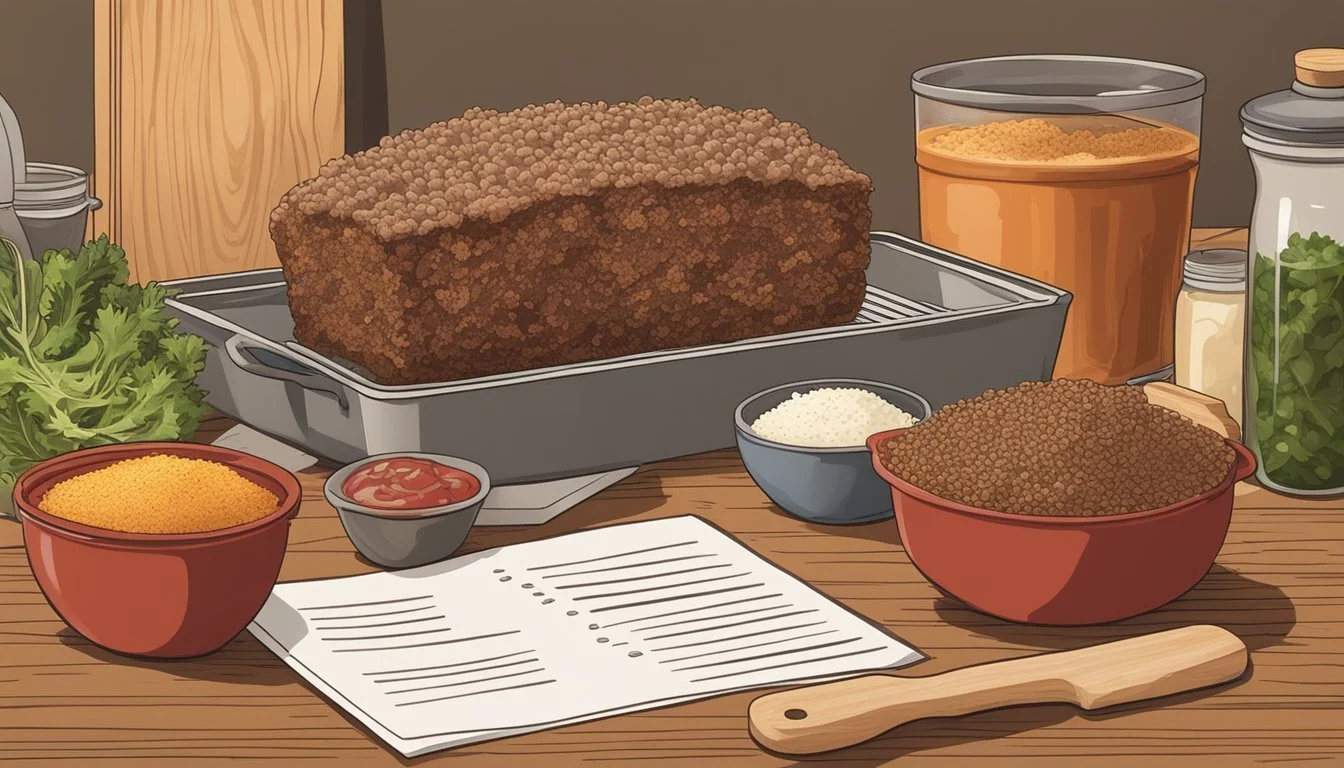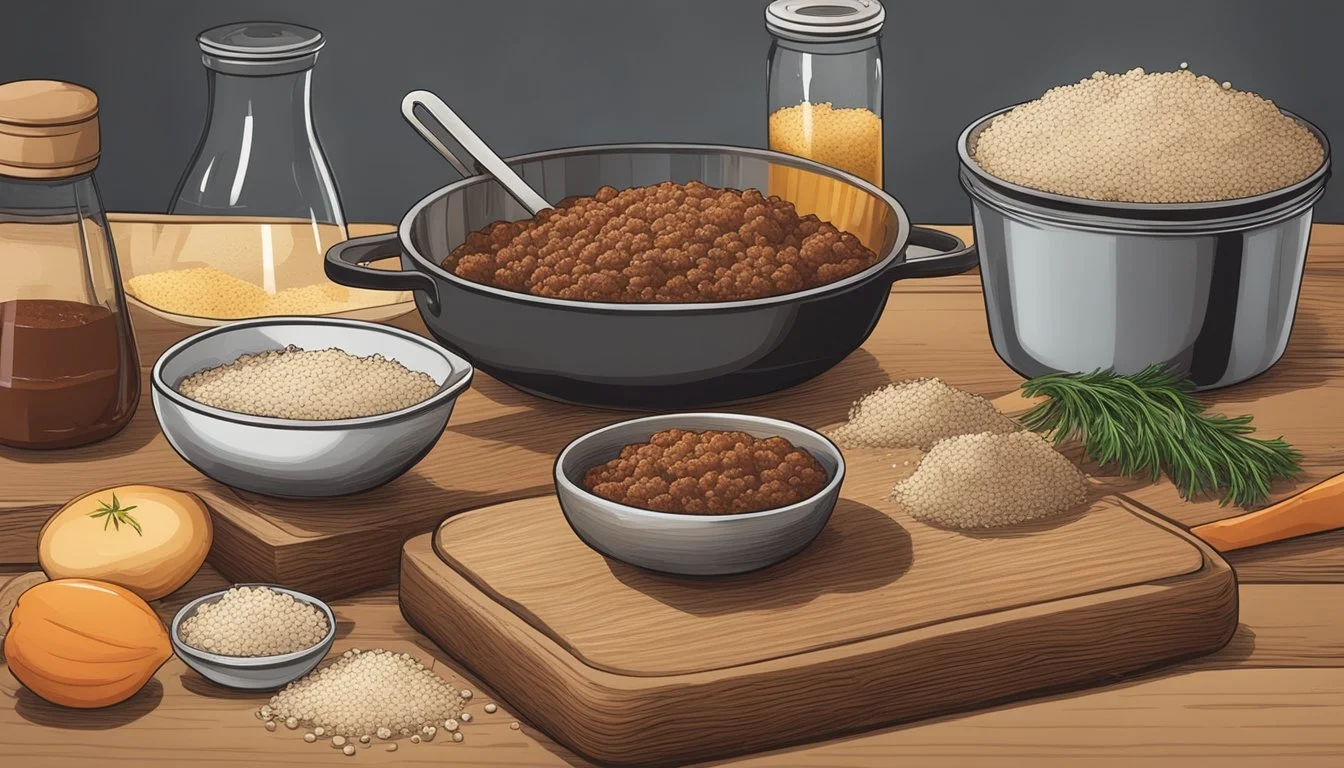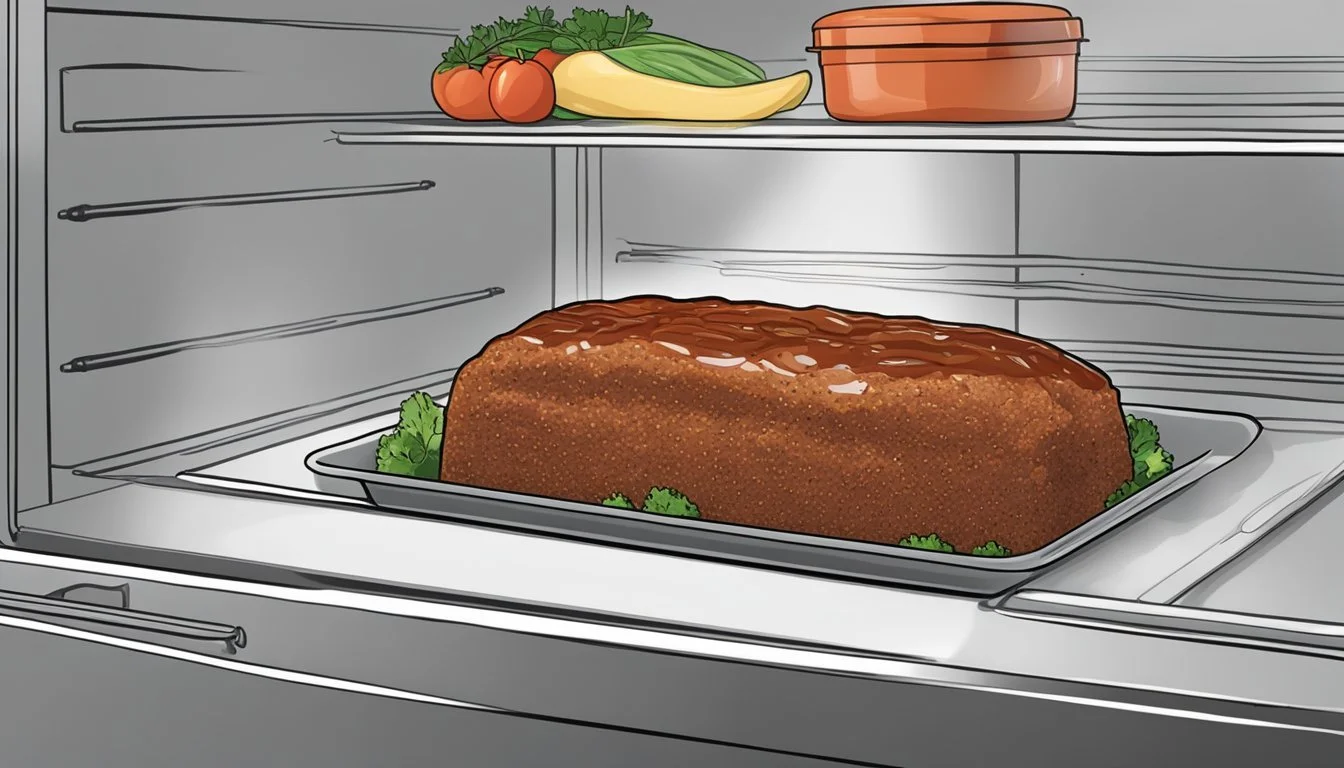How to Make a Texas-Style Meatloaf
The Ultimate Guide for a Hearty Dinner
Texas-style meatloaf emerges as a hearty twist on the classic American dish, infusing rich flavors that are representative of the Lone Star State's culinary heritage. This dish combines the comforting texture of traditional meatloaf with a bold mix of spices and ingredients that deliver an unmistakable Southern kick. Ground beef, a staple in Texan cooking, typically serves as the foundation for this meatloaf, ensuring a juicy and satisfying entree.
When preparing a Texas-style meatloaf, a variety of spices are key to achieving the authentic Texan flavor—seasonings such as chili powder and cumin often make an appearance, setting this version apart from its more conventional counterpart. In addition to spices, ingredients like bell peppers, onions, and garlic are incorporated to add depth and dimension to the taste profile. It's not uncommon for recipes to suggest a finishing glaze or topping, like a rich tomato sauce or tangy brown gravy, which is applied close to the end of the baking period to create a flavorful crust.
The process for making this dish is approachable, making it accessible to cooks of various skill levels. Typically, it involves mixing the ground meat with the seasonings, binding agents like bread crumbs or oats, and other aromatics before shaping the mixture into a loaf. It's then baked until cooked through and often topped with a delectable sauce to round out this quintessential Texas-style feast.
Essential Ingredients
The Texas-style meatloaf calls for a perfect blend of meats, fresh vegetables, binding agents, and bold seasonings. Selecting quality ingredients and preparing them appropriately is pivotal to crafting a flavorful and juicy meatloaf.
Selecting the Meat
For the meat base, it is customary to use a mix of ground beef and ground pork. The beef brings a robust flavor, while the pork adds juiciness and tenderness to the loaf. A common ratio to follow is two parts beef to one part pork.
Preparing the Vegetables
Finely chop your vegetables to ensure they cook evenly and integrate well into the meatloaf. Essential vegetables include yellow onion, green bell pepper, and celery. For an extra kick, consider adding diced jalapeno. Mince garlic cloves or use prepared minced garlic to infuse the meatloaf with its aromatic essence.
Binding Ingredients
Binding agents are crucial to hold the meatloaf together. Combine the meat mixture with eggs as a cohesive element. Incorporate either breadcrumbs or oats to absorb moisture and maintain structure.
Spices and Seasonings
Add complexity and depth to the flavor profile with bold seasonings. Essential spices include salt, black pepper, cumin, and dried thyme. A pinch of cayenne pepper can be introduced for a subtle heat that complements the other spices without overpowering the dish.
Preparation Technique
The key to a perfect Texas-style meatloaf lies in the meticulous combination of ingredients and the technique used to shape the loaf. It’s essential to incorporate the mix evenly without overworking the meat to maintain a tender texture.
Mixing the Ingredients
One begins by thoroughly combining the lean ground beef with a source of fat, which could be ground pork or perhaps another fatty meat, to ensure juiciness. The ratio of lean to fat is crucial; typically, a 70/30 or 80/20 mix provides ideal texture and flavor. The meat is seasoned with a blend of choice spices, including salt and pepper, to enhance flavor.
The dry and wet elements are handled separately. The milk, which adds moisture and tenderness to the loaf, is mixed with eggs, ensuring a cohesive binder that will help the meatloaf maintain its shape. If oats are being used, they are soaked in the liquid mixture to soften. Afterward, the wet ingredients are gently combined with the seasoned meat, ensuring not to compress the mixture excessively to prevent it from becoming dense.
Shaping the Loaf
Once the meat mixture is seasoned and well-combined, it’s time to shape it into a loaf. The mixture should be transferred to a loaf pan that has been prepped with cooking spray to prevent sticking. The loaf is then sculpted, by hand, into a uniform shape that will cook evenly in the oven. Care is taken not to pack the meat too tightly, while still ensuring the loaf is cohesive and holds together well. A light touch is essential at this stage to preserve the tenderness of the meatloaf once cooked.
Cooking Instructions
Crafting a Texas-style meatloaf involves careful attention to cooking temperatures and times, along with the creation of a flavorful glaze. Ensuring that the meatloaf has reached the correct internal temperature is crucial for both safety and texture.
Meatloaf Cooking Time and Temperature
The oven should be preheated to 350°F before baking the meatloaf. Texas-style meatloaf typically requires 45 to 60 minutes of cooking time, but always verify that the internal temperature at the center has reached 160°F with a meat thermometer. This ensures that the meatloaf is cooked through and safe to eat.
Creating a Glaze
A proper glaze adds a signature taste to a Texas-style meatloaf. Combine ingredients like ketchup, Worcestershire sauce, liquid smoke, bbq sauce, cider vinegar, honey, and mustard to taste. The glaze should be tangy and slightly sweet. Apply it over the meatloaf during the last 15 minutes of baking to create a caramelized and flavorful crust.
Resting the Meatloaf
After the meatloaf is finished baking, it should rest for about 10 minutes before slicing. This allows the juices to redistribute, ensuring that every slice is moist and flavorful. Slicing too soon can result in a drier meatloaf, as the juices would not have settled.
Serving Suggestions
When it comes to Texas-style meatloaf, the rich flavors pair well with a variety of sides. Choosing the right accompaniments can elevate the meal from good to great.
Sides and Pairings
Vegetables: A classic choice would be garlicky green beans or roasted carrots. These vegetables balance the hearty meatloaf with a lighter side.
Starches: For a comforting pairing, one might choose creamy mashed potatoes or buttery cornbread. Both sides complement the savory taste of the meatloaf.
Salads: A crisp green salad with a vinaigrette dressing cuts through the richness of the meatloaf, providing a refreshing contrast.
Cheese: Incorporating sharp cheddar into a side dish, like a cheese-topped baked potato, can mirror the robustness of the meatloaf.
Bacon: One can wrap their meatloaf in bacon before cooking, or use it in one of the side dishes, such as a bacon and Brussels sprouts hash, to add a smoky flavor.
To finish the meal, the diner might enjoy a smooth red wine, which pairs nicely with the bold flavors of the meatloaf.
Additional Tips and Variations
When preparing a Texas-style meatloaf, one can experiment with flavors and cooking methods to suit their taste. These variations can elevate the classic recipe, providing a unique twist to this comfort food staple.
Altering the Flavor Profile
To alter the flavor profile of traditional Texas-style meatloaf, one may introduce various spices or substitute ingredients. Instead of the typical breadcrumbs, using almond flour as a binding agent can add a nuanced, nutty flavor and is beneficial for those following a gluten-free diet. To infuse a herby touch, incorporating dried oregano imparts an aromatic depth. A kick of heat can be achieved by blending chili powder or chopped jalapeños into the meat mixture, offering a piquant contrast to the savory beef.
Binding Agent Substitution: Replace breadcrumbs with almond flour for a gluten-free alternative.
Herb Addition: Incorporate 1 teaspoon of dried oregano for herby undertones.
Heat Element: Mix in 1 tablespoon of chili powder or finely diced jalapeños to introduce heat.
Making a Smoked Meatloaf
For those seeking to master the art of smoked meatloaf, one entails a smoker to enhance the flavor profile with a rich, woodsy aroma. The smoker envelops the meatloaf in a blanket of smoke, transforming the exterior into a caramelized crust while keeping the interior succulent. One recommends using woods like hickory or mesquite for an authentic Texas barbecue touch. Smoking temperature should be maintained around 225-250°F and the meatloaf should cook until it reaches an internal temperature of 160°F. This method not only infuses the meatloaf with a distinct smokiness but also tenderizes the meat.
Choice of Wood: Hickory or mesquite for a deep smoke flavor.
Smoking Temperature: Maintain 225-250°F for optimal cooking.
Internal Temperature: Cook until the meatloaf's internal temperature reaches 160°F for safe consumption.
Storage and Reheating
Properly storing and reheating a Texas-style meatloaf ensures that it retains its flavor and texture when enjoyed later. This section provides steps for optimal storage and methods for reheating leftovers.
Proper Storage Techniques
Storing leftovers correctly is crucial to maintain the quality of Texas-style meatloaf. Freezing is the best option for long-term storage. Here's how to do it:
Cool the meatloaf completely before storing to prevent bacterial growth.
Wrap the meatloaf in plastic wrap to create a moisture barrier.
Encase the wrapped meatloaf in aluminum foil to protect against freezer burn.
Store in the freezer for up to 2-3 months.
For refrigeration:
Store the meatloaf in an airtight container.
Refrigerate and consume within 3-4 days for the best quality.
Best Methods to Reheat Leftovers
Reheating meatloaf requires careful attention to preserve the moisture and texture. To retain the savory taste of Texas-style meatloaf, these techniques are recommended:
In the Oven:
Set the oven to 350°F (175°C).
Place meatloaf in an oven-safe dish.
Add 1-2 tablespoons of broth to keep the meatloaf moist.
Cover with foil, and heat until the internal temperature reaches 165°F.
Alternatively, for a slower reheat:
Preheat the oven to 225-250°F (107-121°C).
Reheat for 25-30 minutes covered with foil.
Let the meatloaf rest for 10 minutes after reheating for even heat distribution.
In the Microwave (for individual servings):
Slice the meatloaf.
Place a slice on a microwave-safe plate and cover with a damp paper towel.
Reheat on medium power, in 30-second intervals, checking for even warmth.
Both methods ensure the meatloaf stays moist and reheats evenly, providing a nearly fresh-from-the-oven taste.





